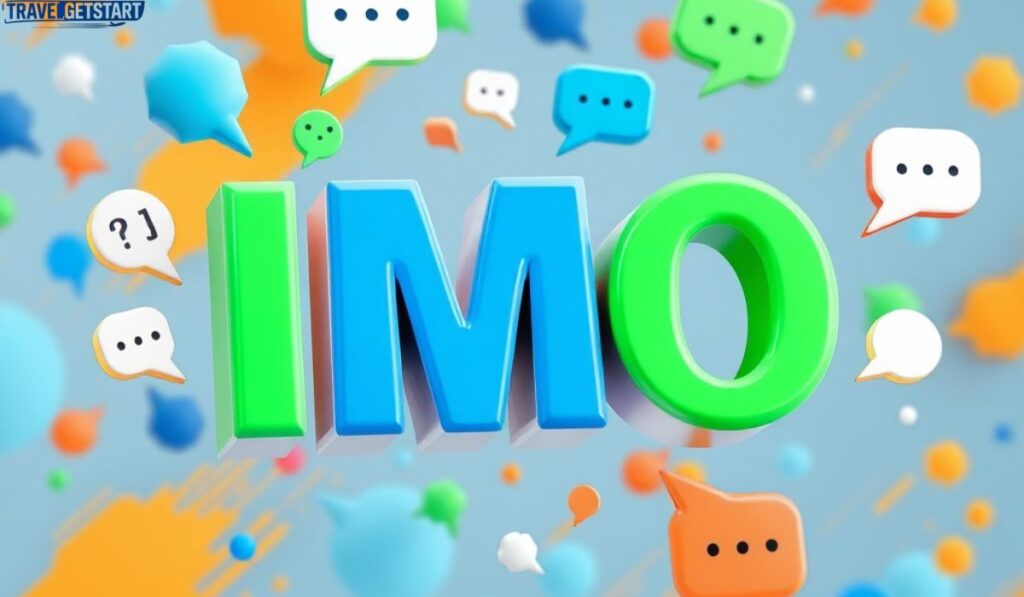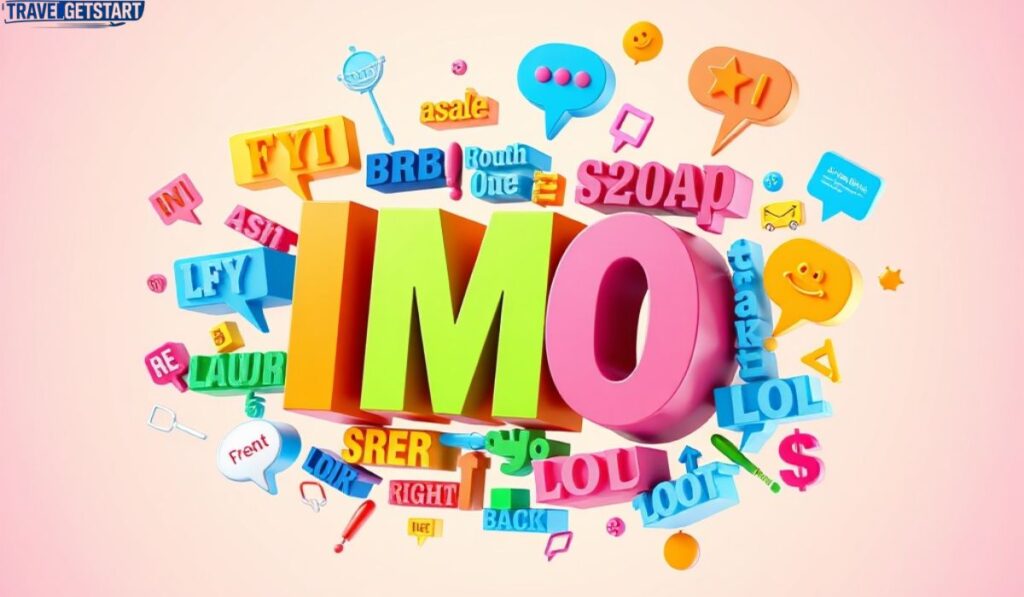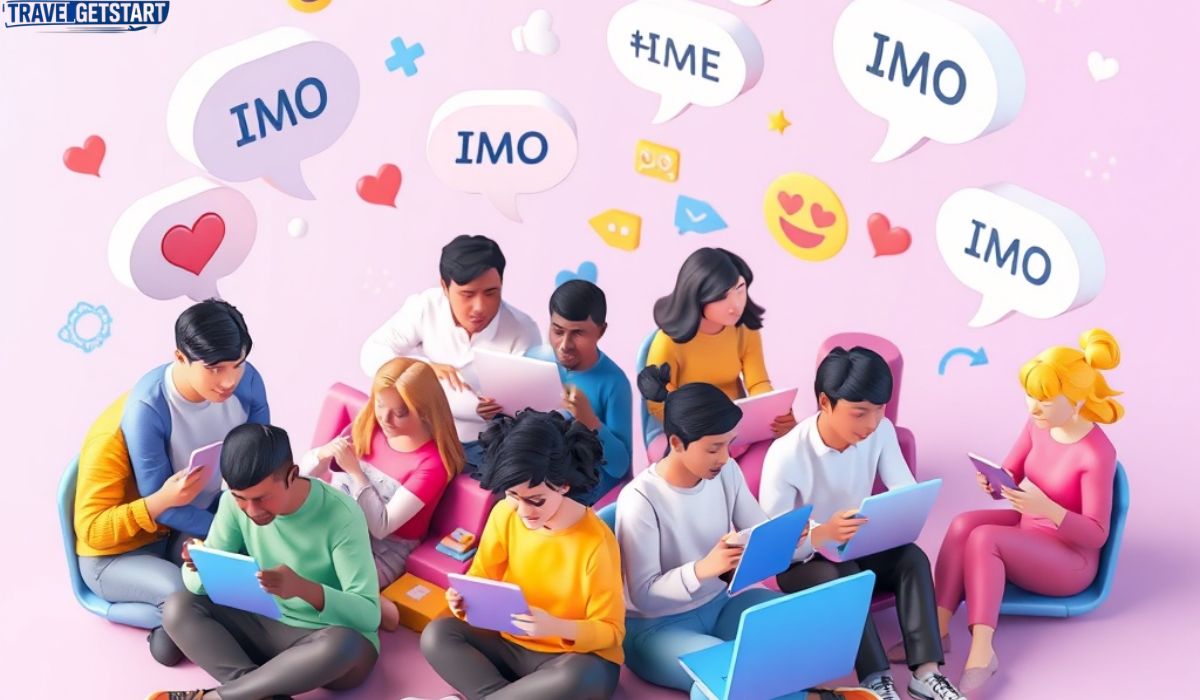In the fast-paced world of digital communication, acronyms like “IMO” (In My Opinion) have become essential tools for expressing thoughts quickly and efficiently. These short forms save time and space, especially in text messaging, social media, and online forums. As conversations shift increasingly online, understanding these terms is key to staying connected.
“IMO” does more than just abbreviate a phrase—it signals tone, intent, and humility. By prefacing a statement with “IMO,” users often soften their opinions, showing openness to dialogue rather than asserting absolute truth. This nuance plays a significant role in promoting respectful and balanced exchanges online.
As language evolves with technology, acronyms like “IMO” reflect how digital culture shapes communication norms. Recognizing their impact helps decode not just what people say, but how they mean it. Ultimately, understanding these digital cues enhances clarity and connection in our virtual interactions.
What Does “IMO” Mean?
“IMO” stands for “In My Opinion” and is commonly used in digital communication such as texting, online forums, and social media. It allows users to share their thoughts or viewpoints in a casual, non-confrontational way. By adding “IMO,” people signal that what they’re saying is subjective, not a universal fact.
This acronym helps soften statements and invites open conversation by showing respect for differing perspectives. It’s especially useful in debates or discussions where tone can easily be misunderstood. Using “IMO” helps maintain civility and reduces the risk of sounding aggressive or overly assertive online.
Key benefits of using IMO
- Softens Personal Opinions
“IMO” makes a statement sound less assertive, reducing the risk of coming across as aggressive. - Encourages Respectful Dialogue
It shows that you’re open to other viewpoints, helping foster a more respectful conversation. - Clarifies Subjectivity
It signals that the message is a personal opinion, not an objective fact. - Reduces Misunderstandings
By setting the tone early, it helps prevent misinterpretation of intent or tone. - Saves Time in Conversation
As a quick acronym, “IMO” is easy to type and ideal for fast-paced digital exchanges. - Fits Informal Communication Styles
It aligns well with the casual tone of most online platforms like social media and chat apps. - Promotes Constructive Feedback
It allows users to give opinions or critiques without sounding overly critical. - Builds Online Civility
Regular use of softening acronyms like “IMO” contributes to healthier, more civil digital interactions.
The Origin and Evolution of “IMO”
The acronym “IMO” (In My Opinion) emerged in the early days of internet communication, particularly in online forums and chat rooms during the 1990s. As users sought faster ways to express themselves, abbreviations became essential tools for quick, efficient interaction. “IMO” quickly gained popularity for its ability to convey personal viewpoints concisely.
Over time, “IMO” evolved along with digital language trends, spreading across platforms like emails, social media, and messaging apps. Variants like “IMHO” (In My Humble Opinion) also appeared, adding layers of tone and humility. Today, “IMO” remains a staple in online dialogue, reflecting both the speed and subtlety of modern communication.
Why IMO stayed popular
- Brevity and Convenience
It’s short, easy to type, and perfect for fast-paced conversations. - Universally Understood
“IMO” is widely recognized across platforms and cultures, making it effective in global communication. - Tones Down Strong Opinions
It helps users express their views without sounding harsh or confrontational. - Adaptable to Various Contexts
Whether in casual chats, debates, or professional discussions, “IMO” fits seamlessly. - Promotes Politeness and Civility
It signals respect for differing opinions, encouraging a more respectful tone online. - Supports Online Anonymity
In forums or comment sections, “IMO” allows users to share opinions without claiming authority. - Evolved with Digital Language
It has kept pace with evolving slang and internet culture, maintaining its relevance. - Often Paired with Other Acronyms
It works well with terms like “IMHO” or “TBH,” expanding its use while retaining its core meaning.
Is “IMO” a Slang, Acronym, or Name?
“IMO” is an acronym, short for “In My Opinion.” It falls under the category of internet acronyms used in digital communication to express personal viewpoints quickly and clearly. While it behaves like slang due to its informal use, its structure and meaning classify it as an acronym.
However, “IMO” can also be mistaken as a name or abbreviation in other contexts, such as the International Maritime Organization or certain brand names. This dual use highlights the importance of context in understanding digital language. In casual conversation, though, it’s most commonly used as an acronym for expressing opinions.
Different ways to categorize IMO
- Acronym
“IMO” stands for In My Opinion, making it a clear example of an acronym used in digital communication. - Internet Slang
Due to its informal tone and common use in chats, texts, and social media, it’s often seen as part of modern internet slang. - Texting Abbreviation
It fits the category of abbreviations widely used in texting and instant messaging to save time and space. - Tone Indicator
“IMO” can function as a tone softener, signaling that the statement is subjective and not meant to offend. - Conversational Shortcut
It’s a verbal shortcut that helps streamline casual digital conversations without sacrificing meaning. - Contextual Identifier
In some professional or formal settings, “IMO” can refer to entirely different things (e.g., International Maritime Organization), so context defines its meaning. - Politeness Strategy
Used to express opinions more politely, it can help reduce confrontation in online discussions. - Digital Culture Symbol
“IMO” represents how online communication has created its own evolving language, blending clarity with efficiency.
“IMO” Pronunciation & Spelling

The acronym “IMO” is most commonly written in all capital letters, reflecting its origin from the phrase In My Opinion. It’s widely used in informal digital communication, such as texting, messaging apps, forums, and social media. Though capitalization is standard, some users may write it in lowercase (“imo”) for a more casual tone.
When it comes to pronunciation, “IMO” is typically spoken as individual letters: “eye-em-oh.” It’s rarely pronounced as a single word and is more often read silently or typed than said out loud. In spoken conversation, people usually just say “in my opinion” rather than using the acronym itself.
Pronunciation guidelines
- Spell Out Each Letter
Pronounce “IMO” as individual letters: “I-M-O,” not as a single word. - Use Clear Enunciation
Speak each letter distinctly to avoid confusion, especially in noisy environments. - Avoid Blending Letters
Don’t try to merge the letters into a word-like sound; it may make it unclear. - Match Tone to Context
Use a neutral or polite tone since “IMO” signals an opinion, not a fact. - Adapt for Audience
When talking to those unfamiliar with internet slang, consider saying the full phrase “in my opinion” instead. - Keep it Brief
Say it quickly but clearly to maintain natural flow in conversation. - Use in Spoken Conversations Sparingly
Since “IMO” is more common in writing, use the full phrase more often when speaking. - Be Consistent
Stick to pronouncing the letters individually every time for clarity and recognition.
How People Use “IMO” Today?
Today, “IMO” is widely used across various digital platforms like social media, text messaging, and online forums. People use it to share personal opinions clearly and quickly without sounding confrontational. It helps soften statements and invites open conversation, especially in debates or discussions.
Additionally, “IMO” is used to signal humility and respect when expressing viewpoints, allowing users to disagree politely. It’s also common in professional emails or group chats where tone matters. Overall, it plays a key role in maintaining positive and effective communication online.
Common ways people use “IMO” include:
- Prefacing opinions to avoid sounding too assertive
- Encouraging dialogue by showing openness to other views
- Softening critiques or feedback
- Making casual conversations more concise and clear
Examples of “IMO” in a Sentence
“IMO” is often used to introduce personal opinions in conversations, helping to clarify that what follows is subjective. It’s a handy way to express thoughts without sounding too forceful or confrontational. This makes it popular in online discussions, texts, and social media posts where tone can be easily misunderstood.
People use “IMO” to gently share their views, whether in casual chats or more serious debates. It signals respect for other opinions and invites open dialogue. Here are some common examples of “IMO” in sentences:
- “IMO, this movie was overrated.”
- “The meeting could have been shorter, IMO.”
- “IMO, we should try a different approach.”
- “This restaurant, IMO, serves the best pizza in town.”
Other Possible Meanings of “IMO”
Besides the popular internet meaning In My Opinion, “IMO” is an acronym used in various professional and technical fields. For example, the International Maritime Organization is a United Nations agency focused on maritime safety and environmental performance. Additionally, in technology, “IMO” can refer to Instant Messaging Object, a component in messaging protocols.
Context is crucial when interpreting “IMO,” as it can also be a company name or industry-specific abbreviation. Without proper context, it’s easy to confuse these meanings, especially in formal or specialized conversations.
Other possible meanings of IMO include:
- International Maritime Organization
- Instant Messaging Object (tech)
- Internet Marketing Organization
- Input Method Editor (IME variant in some contexts)
- Interactive Media Organization
- Insurance Market Organization
- Integrated Management Office
- Various corporate or brand abbreviations
Words and Acronyms Related to “IMO”

“IMO” is part of a broader family of acronyms used to express opinions or convey tone in online communication. A close relative is “IMHO” (In My Humble Opinion), which adds humility and softness to opinions. Another is “TBH” (To Be Honest), used to express candid or straightforward views.
These acronyms help manage tone and intention in text-based conversations, where nuances can be lost. Other related acronyms include “FYI” (For Your Information) and “FWIW” (For What It’s Worth), which clarify the speaker’s intent and keep communication respectful and clear.
Related words and acronyms include:
- IMHO (In My Humble Opinion)
- TBH (To Be Honest)
- FYI (For Your Information)
- FWIW (For What It’s Worth)
- IMO2 (In My Oppinion Too)
- AFAIK (As Far As I Know)
- BTW (By The Way)
- IDK (I Don’t Know)
Is “IMO” in the Dictionary?
“Yes,” “IMO” has been recognized in many modern dictionaries as a valid acronym used in digital communication. Online resources like Merriam-Webster and the Oxford English Dictionary include “IMO” under internet slang, defining it as In My Opinion. Its inclusion highlights how digital language influences mainstream vocabulary.
Additionally, slang dictionaries like Urban Dictionary capture the informal and evolving uses of “IMO.” This shows how language adapts with changing communication styles, and how acronyms once seen as niche now hold mainstream acceptance.
Dictionaries that include “IMO”:
- Merriam-Webster Online
- Oxford English Dictionary (internet slang section)
- Urban Dictionary
- Collins Dictionary (digital slang entries)
- Cambridge Dictionary (online slang)
- Macmillan Dictionary (internet usage)
- Wiktionary (crowdsourced definitions)
- Dictionary.com (slang and informal)
Better Alternatives to Say “IMO”
While “IMO” is effective for informal digital conversations, sometimes alternative phrases better suit formal or professional contexts. Phrases like “I think,” “In my view,” or “From my perspective” offer clearer, more polished ways to express opinions without slang.
For casual or polite communication, “IMHO” (In My Humble Opinion) provides a softer tone. Choosing the right alternative depends on the audience and setting, ensuring your opinion is conveyed appropriately and respectfully.
Better alternatives to say “IMO” include:
- I think
- In my view
- From my perspective
- In my humble opinion (IMHO)
- As I see it
- To my mind
- It seems to me
- Personally
Cultural and Generational Impact of “IMO”
The acronym “IMO” reflects the fast-paced and informal communication style embraced by younger generations, especially Millennials and Gen Z. Its widespread use in texting and social media highlights how digital culture shapes language, making conversations quicker and more efficient. This shift influences not only how people communicate but also how they express opinions with subtlety and respect.
However, older generations or those less familiar with internet slang may find “IMO” confusing, creating a communication gap. This cultural and generational divide underscores the importance of understanding such acronyms to bridge communication styles and foster clearer interactions across age groups.
Cultural and generational impact points:
- Reflects digital communication trends
- Popular among Millennials and Gen Z
- Facilitates quick, casual conversations
- Softens opinions to avoid conflict
- Creates a language gap with older generations
- Encourages inclusivity in online discussions
- Influences language evolution
- Highlights informal vs. formal communication differences
Why It’s Important to Know These Words?
Understanding acronyms like “IMO” is essential for effective communication in today’s digital world. These terms help convey tone and intent that might otherwise be lost in text, reducing misunderstandings. Knowing such slang or acronyms enables better engagement on social media, forums, and in professional messaging.
Moreover, familiarity with these words helps build rapport and trust in conversations, especially among younger or tech-savvy audiences. Being fluent in digital language can improve both personal and professional relationships by making communication smoother and more relatable.
Reasons why it’s important to know these words:
- Enhances clarity in digital communication
- Reduces misinterpretation of tone
- Helps engage with online communities
- Builds rapport with younger audiences
- Improves social media interactions
- Supports professional digital correspondence
- Keeps communication current and relevant
- Bridges generational language gaps
The Future of the Word “IMO”
As digital communication continues to evolve, “IMO” is likely to remain a staple acronym, adapting alongside new slang and trends. Its simplicity and utility make it a timeless tool for expressing opinions quickly and politely. We may also see it integrated more seamlessly into voice-to-text and AI communication tools.
However, the rise of new platforms and changing communication habits could introduce fresh alternatives or variations. Despite this, “IMO” will likely continue to represent a fundamental part of digital discourse, balancing brevity and clarity for years to come.
Points about the future of “IMO”:
- Expected to remain widely used online
- May evolve with new slang and formats
- Could be integrated into AI and voice tech
- Likely to maintain its polite tone function
- Faces competition from emerging acronyms
- Could influence formal communication styles
- May see regional or platform-specific variations
- Will continue bridging opinions and tone in digital media
Frequently Asked Questions
Is using IMO considered unprofessional?
IMO is generally informal and may be seen as unprofessional in formal business settings.
Do people from other countries understand IMO?
Yes, “IMO” is widely recognized globally, especially among internet users.
Can IMO be offensive in any context?
“IMO” itself isn’t offensive but can come off as dismissive if used insensitively.
Should children learn internet abbreviations like IMO?
Yes, understanding common abbreviations helps children navigate digital communication effectively.
Will IMO eventually disappear from online communication?
It’s unlikely; “IMO” remains popular due to its simplicity and usefulness.
Conclusion
The acronym “IMO” exemplifies how digital language shapes the way we express opinions today—quickly, clearly, and politely. It bridges the gap between formal writing and casual conversation, helping users share thoughts without sounding too direct or confrontational. This small phrase carries big power in maintaining respectful and engaging online interactions.
As communication continues evolving with technology, understanding terms like “IMO” becomes essential for effective dialogue across generations and cultures. Embracing digital language tools not only enhances clarity but also fosters connection, making “IMO” a vital part of modern communication’s landscape.





